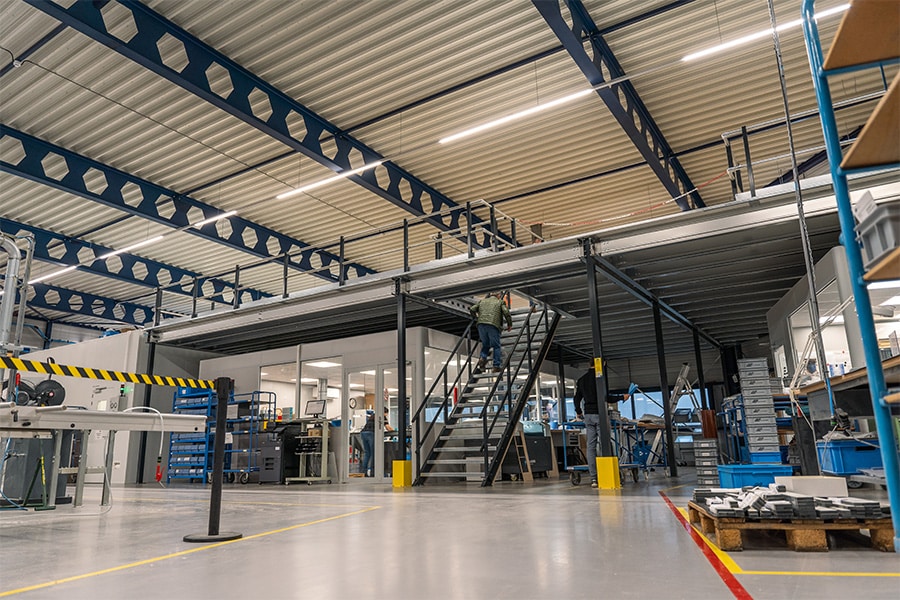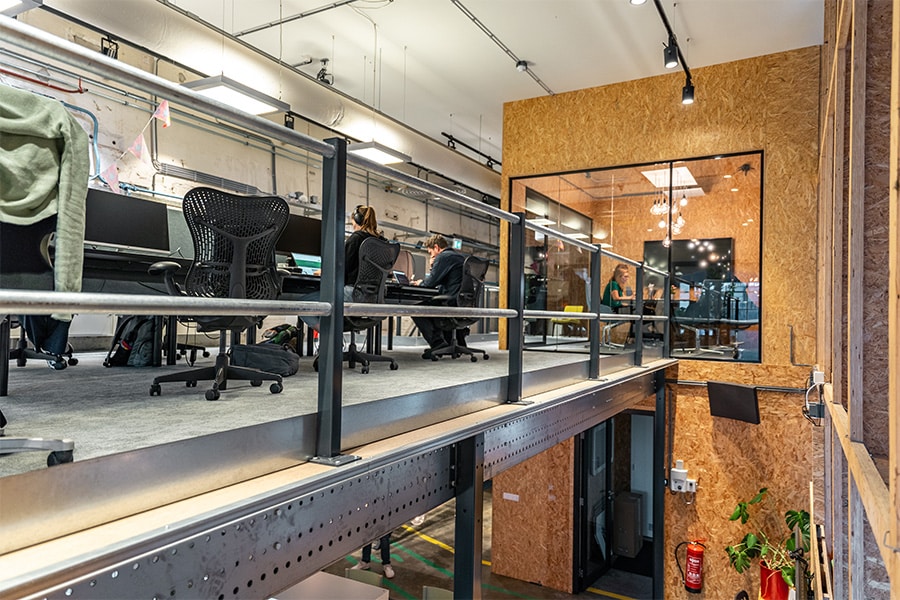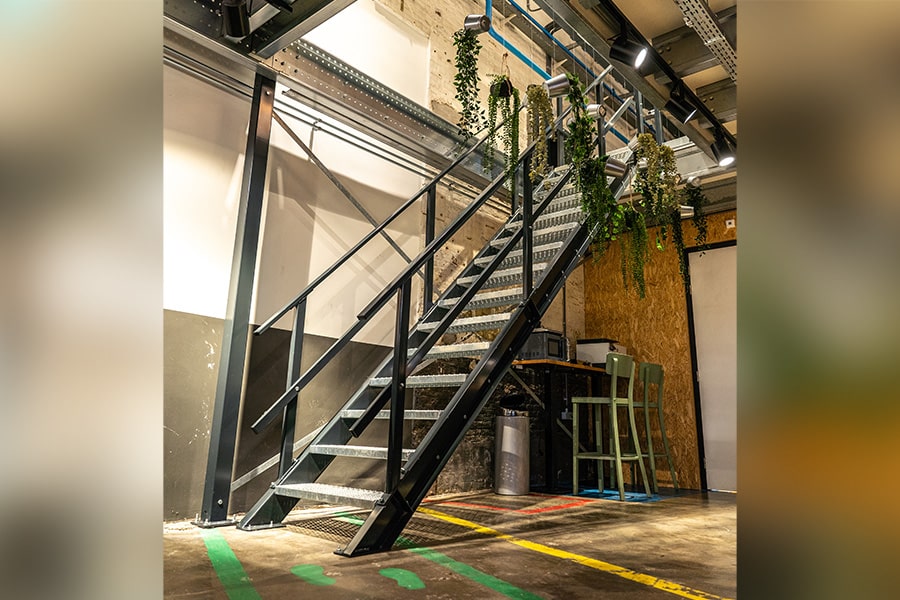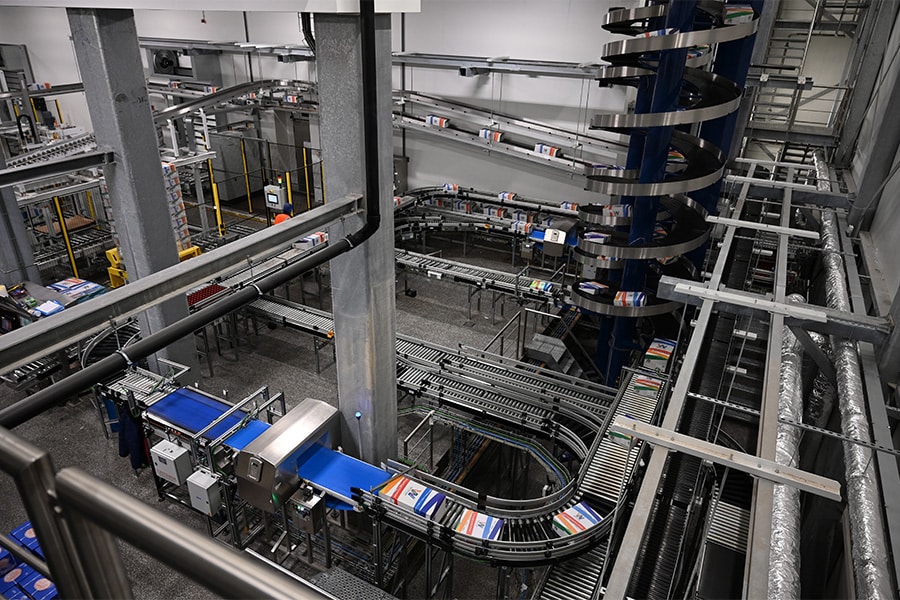
'Additional warehouse space without expansion'
Now that construction and rental costs are skyrocketing, there is a shortage of power on the grid, and permit procedures are becoming increasingly rigid, creative use of existing warehouse space is becoming increasingly important. With its mezzanine floors, Begra Warehouse Equipment offers a smart and flexible solution to create more space in existing halls.
The essence of Begra's offer is simple but effective: with a mezzanine floor you make the best use of the height of an existing hall. Where previously only the floor area was used, now, thanks to a steel construction, an extra floor can easily be added. This provides space for additional storage, picking locations or even an office function.
"With an intermediate floor like this, you quickly create more usable square footage in your warehouse at a relatively competitive price, without the need for an expansion," says Jan Machielsen, Team Leader of Projects and Procurement Department at Begra Warehouse Equipment. "We supply these floors in all kinds of dimensions, from small units of 25 m² to installations of more than 1,000 m². This makes them suitable for SMEs as well as large logistics centers."

Custom advice
Especially in warehouses where only manual picking is performed and the clear height is not utilized, an intermediate floor is an ideal solution, Machielsen emphasizes. "With our team of engineers, we draw each floor so that it fits the space perfectly and meets all the strength calculations. And if required, we send an account manager on site to measure the situation and identify possible bottlenecks."
A major plus point here is also the degree of personalization Begra offers, Machielsen continues. "Not only is each floor tailored to the space in terms of dimensions and height, but the appearance can also be entirely in the company colors. Where anthracite gray is the standard color, columns and railings can also be supplied in, for example, red, blue or green - matching the customer's corporate identity."

Mandatory inspection
Mezzanine floors may look simple, but appearances can be deceptive. "What companies often overlook is that mezzanine floors - just like scaffolding - are subject to certain inspection obligations," says Managing Director Sander Geurts of Safety Support, Begra's own inspection company and the regular partner for inspections of all kinds of scaffolding and mezzanine floors. "Especially when a mezzanine floor is mechanically loaded, for example with pallets via forklifts, an annual safety inspection is mandatory according to the Occupational Health and Safety Decree. In addition, a mandatory inspection also applies when each floor is put into service. Failure to comply can result in hefty fines. And in the event of an accident, the consequences are often incalculable. If no inspection has taken place, in such a case the insurance company will not pay the damages in many cases."
Speaking of safety, another point that sets Begra Warehouse Equipment's mezzanine floors apart is the attention paid to standard safety features such as kick edges, collision protection and fall protection. Geurts: "For example, depending on the desired working method and safety requirements, pallet storage areas can be equipped with chains, tilt gates or sliding gates."
Logistical advantages
Besides providing additional space, Begra's mezzanine floors also have other important logistical advantages, Machielsen says. "Mezzanine floors are flexible in use: they are relatively quick to install, easy to dismantle and therefore reusable when moving or rearranging the warehouse. Moreover, different load capacities and heights are possible, depending on the load and intended use. Another strong point is availability. We always have a large number of standard components in stock. The common dimensions of 2.80 meters, 3 meters and 3.20 meters are available quickly, which significantly reduces lead times."
New safety standard
Although all of Begra's products already meet all applicable requirements, the sector is on the verge of further professionalization. "Within the European Working Group 14, a new standard FEM 10.2.21 is being worked on; it is specifically aimed at industrial platforms," Geurts clarifies. "Among other things, this standard will set requirements for the stiffness of floors and connections, with the aim of further minimizing occupational risks. Publication of this standard is expected in late 2025 or early 2026."




